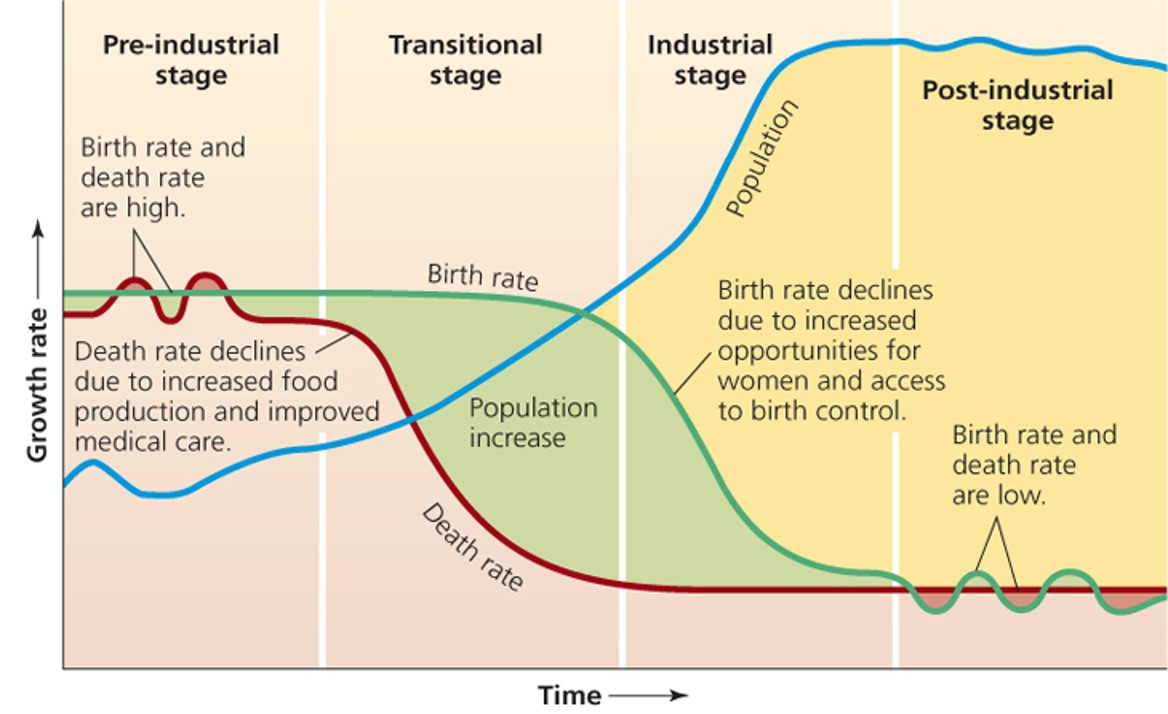 |
| Previous Image | Next Image |
| Description: Natural rate of population change = due to birth and death rates alone In countries with good sanitation, health care, and food, people live longer Life expectancy = average number of years that an individual is likely to continue to live Increased due to reduced rates of infant mortality Urbanization, industrialization, and personal wealth Demographic transition = a model of economic and cultural change to explain the declining death and birth rates in industrializing nations high birth and death rates change to low birth and death rates As mortality decreases, there is less need for large families Parents invest in quality of life Demographic transition – four stages The pre-industrial stage has defined most of human history Transitional stage initiated from industrialization Industrial stage increases employment outside the home Post-industrial stage sees both birth rates and death rates fall to low levels Population growth is seen as a temporary phenomenon It has occurred in Europe, U.S., Canada, Japan, and other nations over the past 200-300 years But, it may or may not apply to all developing nations The transition could fail in cultures that Place greater value on childbirth Grant women fewer freedoms Picture Stats: Views: 335 Filesize: 113.72kB Height: 714 Width: 1168 Source: https://biology-forums.com/index.php?action=gallery;sa=view;id=35711 |
